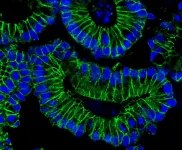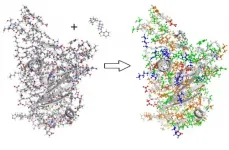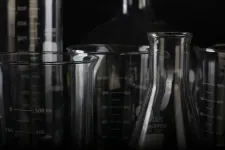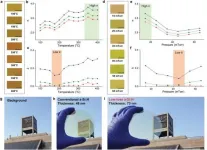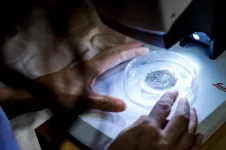(Press-News.org) Memorial Sloan Kettering Cancer Center (MSK) physicians and scientists presented new research at the 2021 American Society of Clinical Oncology Genitourinary Cancers Symposium held virtually February 11-13. Notably, MSK medical oncologist Robert Motzer, MD, presented encouraging data from a phase III randomized study that assessed two new treatment combinations as first-line treatments that may prolong survival in people with advanced kidney cancer. Dr. Motzer's findings were also published on February 13 in the New England Journal of Medicine.
In this large, international trial involving 200 sites across 20 countries, Dr. Motzer and a team of investigators evaluated two new regimens as first-line treatments for patients with advanced renal cell carcinoma (RCC) -- lenvatinib (Lenvima®) plus pembrolizumab (Keytruda®) and lenvatinib plus everolimus (Afinitor®) -- as compared with the current standard of care, sunitinib (Sutent®). They found that treatment with lenvatinib plus pembrolizumab was associated with significantly longer progression-free survival and a higher percentage of patients with an objective response versus sunitinib. Furthermore, results for overall survival were significantly longer in favor of lenvatinib plus pembrolizumab over sunitinib. Treatment with lenvatinib plus everolimus was also associated with a higher percentage of patients with an objective response and longer progression-free survival than sunitinib, but it did not have a significantly greater effect on overall survival.
"We are encouraged by all the data," said Dr. Motzer. "As physician-researchers, we consistently strive to provide our patients with the most effective therapies and give those with advanced disease more options. These results could lead to a change in the standard of care for these patients."
Dr. Motzer and colleagues concluded that lenvatinib plus pembrolizumab achieved significant improvements in progression-free survival, overall survival, and objective response rate versus sunitinib in the first-line treatment of patients with advanced renal cell carcinoma.
Continuing to Make Strides in Research for Kidney Cancer Patients
Cancer immunotherapy was born at MSK a little over a century ago. Since then, physician-scientists across MSK have led the effort to develop immune-based treatments for different types of cancer. MSK has been at the epicenter of discoveries in the field, and the institution's work is bringing exciting new treatment options to people around the world. MSK physicians have extensive experience using immunotherapy to treat people with melanoma, kidney cancer, lung cancer, and other cancers, as well as in handling immune-related side effects.
Despite available therapies for advanced metastatic kidney cancer, new options are needed to improve long-term disease control and patient survival. Without treatment, kidney cancer can be an aggressive disease. At the time of diagnosis, the cancer has already spread to other organs in approximately 30 percent of people, and about one-third of people whose disease is confined to the kidney will have a relapse. In 2021, it is estimated that over 73,000 new cases of RCC will be diagnosed and there will be nearly 15,000 deaths due to RCC in the United States -- and numbers are expected to rise significantly in the next decade.
"Over the years we have made very encouraging progress in our overall understanding and treatment of advanced kidney cancer; however, ongoing research is very crucial so we can give patients better treatment options to help manage their disease," said Dr. Motzer.
INFORMATION:
This trial was sponsored by Eisai, Merck Sharp, and Dohme; CLEAR Clinical Trials.gov number NCT02811861.
About Memorial Sloan Kettering (MSK):
As the world's oldest and largest private cancer center, Memorial Sloan Kettering has devoted more than 135 years to exceptional patient care, influential educational programs and innovative research to discover more effective strategies to prevent, control and, ultimately, cure cancer. MSK is home to more than 20,000 physicians, scientists, nurses, and staff united by a relentless dedication to conquering cancer. Today, we are one of 51 National Cancer Institute-designated Comprehensive Cancer Centers, with state-of-the-art science and technology supporting groundbreaking clinical studies, personalized treatment, and compassionate care for our patients. We also train the next generation of clinical and scientific leaders in oncology through our continually evolving educational programs, here and around the world. Year after year, we are ranked among the top two cancer hospitals in the country, consistently recognized for our expertise in adult and pediatric oncology specialties. http://www.mskcc.org.
Using advanced RNA sequencing, scientists have identified two unique subtypes of a prominent mutation present in many patients with Acute Myeloid Leukemia (AML) - called NPM1 - that could help predict survival and improve treatment response for patients whose leukemic cells bear the mutation.
In research published Feb. 16, in Nature Communications, a team led by Princess Margaret Cancer Centre Senior Scientists, Drs. Benjamin Haibe-Kains, Aaron Schimmer and Mark Minden, have discovered that within the NPM1 mutation of AML there exists two unique subtypes, one of which can be effectively treated with drugs already in use.
It is the first study to classify within the common NPM1 mutant form of AML two subtypes, one being "primitive" and the other ...
Most people infected with SARS-CoV-2 are able to recover from the disease at home - even if they might experience very stressful disease progressions. Some have no symptoms at all. But about ten percent of those affected become so severely ill that they have to be treated in a hospital. The assumption that a weak immune system is behind a severe progression is short-sighted. Especially with critical progressions, the immune system works under intense pressure, but does not manage to control the virus.
A Berlin research group has now observed how SARS-CoV-2 uses an immune system defense mechanism to increasingly hijack ...
Computing - Modeling COVID dynamics
To better understand the spread of SARS-CoV-2, the virus that causes COVID-19, Oak Ridge National Laboratory researchers have harnessed the power of supercomputers to accurately model the spike protein that binds the novel coronavirus to a human cell receptor.
These simulations also shed light on the ligand molecules that can inhibit such binding, pointing the way to potential drug therapies.
An ultrafast quantum chemical modeling method provides information about the critical electronic interactions between protein and ligand chemicals, going beyond the classical interaction models that are normally employed in computational drug discovery.
The findings will enable accurate predictions of the performance of currently available inhibitors ...
The University of Kent has led a study highlighting the urgent need for the UK's Government and renewable energy industries to give vital attention to decommissioning offshore wind turbines approaching their end of live expectancy by 2025. The research reveals that the UK must decommission approximately 300 and 1600 early-model offshore wind turbines by 2025 and 2030, respectively.
Urgent focus is needed now to proactively use the remaining years until turbines installed in the 1990s and early 2000s are no longer safely functional in 2025, to prevent safety lapses, potentially huge costs and the irretrievable loss of the skillset required for safe decommission.
The research shows that these original turbines have an approximate lifetime of 20 to 25 years, but this expectation ...
Atropisomers are a class of stereoisomers (chemical compounds that differ in spatial arrangement of atoms) arising from restricted rotation around a single bond and have various applications in chemistry. To date, most research on atropisomers has focused on "biaryl atropisomers" (due to the rotational restriction around a carbon-carbon bond), but it is also possible for atropisomers to arise from rotational restrictions around a nitrogen-carbon (N-C) bond. These N-C axially chiral compounds are found in various natural products and bioactive compounds and thus have promising applications in medicine ...
A POSTECH research team has developed a transparent amorphous silicon that transmits visible light - which permits us to distinguish the colors of objects - enabling the development of paper-thin lenses usable in head-mounted displays (HMD) that show virtual and augmented reality images in real time.
A research team - led by Professor Junsuk Rho of POSTECH's mechanical engineering and chemical engineering departments, and Ph.D. candidate Younghwan Yang and Dr. Gwanho Yoon of the Department of Mechanical Engineering - has developed visibly transparent amorphous silicon by improving the plasma enhanced chemical vapor deposition (PECVD) method, a practice widely used by Korean display manufacturers. ...
Tsukuba, Japan - Sleep is very important for athletes, and sleep loss can affect physical performance and cognitive ability. But now, researchers from the University of Tsukuba have identified the prevalence of sleep disorders in visually impaired athletes, as well as specific risk factors associated with lower sleep quality.
In a study published last November in Sleep Medicine, researchers from the University of Tsukuba conducted a survey of 99 visually impaired athletes in Japan and analyzed data from 81 respondents. They found that approximately one-third of the respondents had sleep disorders. Further, higher levels of stress regarding interpersonal relationships ...
CORVALLIS, Ore. - Statistical modeling developed by Oregon State University researchers has confirmed that changes to melanoma patients' gut microbiome led them to respond to a type of treatment capable of providing long-term benefit.
Findings were published in Science.
The modeling technique invented by Andrey Morgun of the OSU College of Pharmacy and Natalia Shulzenko of Oregon State's Carlson College of Veterinary Medicine is known as transkingdom network analysis.
The human gut microbiome is a community of more than 10 trillion microbial cells from about 1,000 different bacterial species, and transkingdom network analysis integrates ...
Water is a necessity for all life but its availability can be limited. In geographical areas experiencing dry seasons, animals congregate near the few freshwater sources, often reaching large densities. At these sites many animals from different species come to the same spots to drink, potentially operating as key locations for pathogen transmission within and between species. An international team of scientists lead by the German Leibniz Institute for Zoo and Wildlife Research (Leibniz-IZW) suggests that viruses can use restricted freshwater sources as a vector to be spread among animals. The key prediction of this idea is that animal viruses remain stable and infectious in water. The team ...
The effects of microplastics on our health and the environment are being rigorously studied all across the world. Researchers are identifying microplastic sources and their potential routes to the environment by examining rainwater, wastewater, and soil.
Microplastics have been found in nearly all organisms and habitats everywhere in the world. However, factors contributing to the influx and accumulation of microplastics in water ecosystems aren't fully understood yet. The focus of microplastics research has, for a long time, been on the age of microplastics found in sediments, and on the ...

